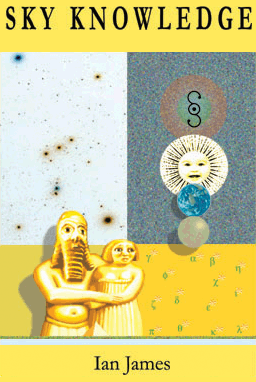1 Introduction
In the current context—with more and more people thinking about global warming, moral confusion, religious conflict, and new planets in the sky—this book is rather topical; and it can contribute much to ongoing discussions.
1.1 Origins
After harbouring an idea for a new kind of astrological journal, I sought to write a brief introduction to it, outlining both the traditional beliefs of astrology and the more recent astronomical and astrophysical findings of science. In the process, I encountered many curious anomalies, much nonsense and various distractions; so the text grew from some twenty humdrum pages to around 500 of a very different kind.
The first of many unsatisfactory notions I came across was to do with the origins of the zodiac. After some thought, I realized this and many related notions could be better explained once a new approach or vision was applied. I also knew this new approach was not only interesting and innovative, but also worthy of a book. I could see a need, indeed a niche for such a book. In addition, I felt the serious faults of poor logic and shallow thinking many New Age books exhibited could be avoided, as could the rigidity and aloofness of much scientific writing. It required from me two years of continuous attention: during this time I undertook research and long contemplation of the necessary issues, until I was satisfied with the integrity and clarity of the result.
As readers progress through the known and the new, they will see an accumulating world-view which—if they are patient—builds to a fascinating climax in the last chapters. It is hoped readers will share my journey in this way.
1.2 Readership
This book is for readers interested in (it touches all of these things): astrology, astronomy, ancient history, comparative religion, cosmology, nature-folk-goddess religions, philosophy, psychology of consciousness, physics, mysteries, fresh ideas.
An ‘ideal reader’ might be: curious about life’s wonders, somehow dissatisfied or sceptical of science and/or religion, interested in puzzles and new ideas, perhaps a furtive browser of the newspaper’s star-sign column. It is cross-discipline soft science, but it turns out to be a curious book, difficult to categorize precisely. It has aspects of both Popular Science and New Age genres – using a scientific approach to metaphysical ideas, and a fresh, rather spiritual approach to science. It is not a re-hash of textbook material; indeed a great proportion of the content will be new even to those familiar with the general topics.
Because it deals with many topics in a new light, some may, on a cursory glance, wonder if it’s a bit weird; but such readers may be surprised by the clarity of thought and seriousness of purpose running through the book. It does target condescending attitudes towards the past, and fantasies about progress; so some will find it controversial and challenging. There is potential for fervent review and discussion.
1.3 Topics
The book’s title hints at the wide-ranging content. Very broadly, the themes are humankind’s interpretation of things beyond our terrestrial world, and our self-image both ancient and modern. Naked-eye astronomy/astrology is used as a framework for discussion, and diverse facts and common ideas related to sky and knowledge are brought together, much of them needing fresh appraisal.
But many related things are touched upon, and many new assertions made. Put another way, the book presents new ways of looking at and thinking about many important old ideas; a fresh look at humanity’s heritage and our resultant view of the universe. It does not talk about: aliens, conspiracy theories, space travel, channeling, or ways to attain psychic power, etc. Sky Knowledge emphasizes clear observation, sober thinking and responsible attitudes to knowledge. That said, one of the conclusions which emerges naturally is that a proper understanding of astrology has some relevance today. This will be welcomed by New Age followers, and science-minded readers will enjoy the surprising journey toward this end.
Of special interest to some will be the presentation of an ancient Indo-Asian cosmology which still survives in Thailand (the Phrommachart), for the first time in English. Also, new interpretations of Sumerian historical texts reveal under-appreciated profundity, and fresh views on fengshui and the zodiac bring new appreciation to these clichés of New Age thinking. More than this, we find a view of our world and our solar system which regular books on astronomy and astrology neglect to mention.
2 Table of Contents
|
1 Our physical place in the cosmosOur planet and its rotation. Stars. Our sun. The magnetic field and magnetosphere. Our orbit. Obliquity. Timezones and noon. Precession. Our moon. Nodes and the Moon’s changing orbit. The planets. Other members of the system. Beyond. Human cycles. 2 Overview of astrologyStars in Mind. The zodiac. Astrological planets and relationships. The purpose of traditional astrology. Analysis of the geocentric system. Accuracy and complexity. 3 The watchersHistorical setting. Sumerian whispers. What watching? What we know. Attitudes and response. Evolving or just revolving? Split with the past. Ancient talent. Old men and the sea. Prehistoric organs of perception. In the realm of the sensors. Flower power. Divine flesh and vines of the soul. Let’s put a pyramid here. A proviso. 4 Myths about godsDivine influences. Idol in the extreme. Dreaming with open eyes. Ditties and deities. The location of Heaven. The Mysteries. Gods jostling. Stars and the astral realm. Spirit(s) of place. 5 The celestial eventsRemembering past astrologers. Early celestial mechanics in a geocentric system. Aligning Moon and Sun. Solar quarters. A star is visible tonight. 6 Introduction to the MoonThe Sun is great but the Moon is prettier. Lunar significances. Old numbers in action I. Old numbers in action II. Darkening of Moon and Sun. Other signs in the sky. Hints from the history of calendars and star-maps. Powers of twelve. Skywheel. Starting from horns. Curve and circle. 7 Lunar storiesSky terrain, with water. The Heroes and the Pain. Mirrors of the gods. Looking around at the action. Around the sky in about a month. Moons of ancient India and the far-off Pacific. Reading by moonlight. 8 A primaeval calendarAn older sky. A little older still. Affairs in Sumer. Spreading the story. The biggest story in the world. The story in its raw form. Galactic offspring. A good time for sky-stories. Even further back? Lunar to solar. Divorcing the Moon and dethroning the Sun. Active and passive, Heaven and Earth. 9 Myths about mythsMythology and word of mouth. We know them, but not by name. Music sources of authority. Starlight from before the Flood. Another lofty document. Dividing the kingdom between a king and a god. How universal is the star-map? Some star points from the New World. Some star points from India. A star point from Sumer. 10 Children of the MoonMensuration and how women count. Women together under the Moon. Blessing life and death. In warm blood. Contracts written in blood, sweat and tears. The goddess-like Moon. Eclipses are private. Reflecting on real magic. Superstition, just for good measure. 11 Plants growing up under Sun & MoonLunar gardens. The Moon and water. Lunar mechanisms. What plants know. The glory of trees. 12 Boding a futureOmens. Where to find the future. Divine is in the details. Dealing with fore-knowlege. Dealing with shadows. Thinking about thoughts. Sleeping on it. Superstition and desire for the ultra-mundane. Finding the bones of Schizoid Man. 13 Boding a pastThe old ones. Evolution. Fast-tracking the present. Environmental catalysts. The persuasion of stone. Kissing cousins. State of the species. Blips in the timeline. And then? PART II – SYSTEMS 14 Looking into the sky againIn the fifth watch. Old space, present time. Old signs, new signs. Meaning in astrophysical data. The Moon. Lunar faces. Good and bad moons. Lunar festivities. 15 Seven days that rule the worldThe week. The shrines. Weekly assembly. The world’s first official week? Lucky seven. A week of luck. Grasping ancient objects. More than just a week. The premises of ‘picture’ astronomy. Astral authorities. 16 Our solar neighbourhoodThe planets as personae. The planets as neighbouring worlds. Planets good for billions of weeks. Latecomers. Comets, the genuine wanderers. The aspects. Timing. Rhythm among orbits. Nice orbits. Niggly orbits. Longer cycles. 17 The cosmic ambienceConstellations. What the ecliptic looks like. The signs/sectors. The Chinese zoo. The sixty year cycle. Another jovian system. The zodiacal body. Those who rule the sky. 18 A prehistory of astrologyQuartering the sky. The Mulapin almanack. Wheels and maps. The first 4 quarters. The oldest living constellations? A tour of houses on high. Putting gods on the map. What makes a sky meaningful? 19 Down to EarthA day in the life. Telling the time with watches. Where the Chinese zodiac animals live. Hours and houses for the stars. Lines and ways. The energy of where we are. Concerning the Great Pyramid. Even older alignments at Giza. The Underworld. On celestial magic. Electric globe. The ball as a bell. PART III – ASTRAL MECHANISMS 20 Introducing our SunThe Sun’s position. Starring the Sun. The shapely ball. The solar wind. The feel of interplanetary space. Sons and daughters of our Sun. The nest. 21 Cosmic quantitiesThe cosmoscope. Drawn to scale. The big league. The circus ride. Progress by numbers. Miscellany of relations. 22 Cosmic qualitiesGetting a feel for things. Symbol, even without metaphor. King of kingdoms? The sixth kingdom. Movers and shakers. Rhythm and caprice. The greatest information highway. All the king’s horses. More than just dust. Newton’s third law and the other us. 23 Thoughts for todayCogito ergo something. The shape of thinking. A mascot. Words for every occasion. Familiarity breeds. Pictures and attendance. The paradox of mind-body dichotomy. The picture-goer. What about me? Implications of the idea idea. The petition went out: consciousness for all. Touching remembrance. Knock on wood. 24 How shall I put this?Proposal for revision of pronouns. Space is more than a gap. Of no fixed abode? The glue of time. Invitation to the dance. Looking for things that matter. Mine host. Close encounters. Elements of architecture. Dominions of matter. 25 Star-nestPreamble. The Sun’s space. Jewels in suspension. Rock-angels. Judgements written in stone. Morality on a large scale. A star’s charisma. The mechanics of starlight. The solar alignments. Stones in the zodiacal light. Parent of gods. Masters of the universe? 26 EpilogueImplications of being small in a big cosmos. Last words. (An invitation). APPENDIX Sumerian sources. Sourcebooks in Thai. Music of the Spheres. Babylonian constellations from the Mulapin almanack. Another Mesopotamian zodiac. Galactic faithfuls. How to write some strange numbers. Pali source. Meteor streams. Tools and resources in the public domain. Acknowledgments. SUPPLEMENT: INTRODUCTION TO THE ALMANACK The Astro-Logical Almanack. Years, points in time. Time and accuracy. Lunar geocentric information. Aspects. Lunar aspect resonances. The Sun’s planets. The Earth/Sun. Planetary weight. Unseen planets and moons. Meteor streams. Adjustments to the coordinate system. The helio-zodiac. Beyond an almanack. |
| ISBN 978 0 9805146 0 5, size A5 (21×14.8 cm) |
3 Comments
- “more original thought on single pages than many books have in their entirety”
- “a breathtaking panorama of enquiry”
- “some extraordinary insights, quite visionary”
- “watching science and society from well outside the square”
- “one of the most interesting books of naked-eye cosmology since the 16th century”
- “destined to become a classic”
- “only rarely does a book like this emerge”
- “a work of raw genius”
- “a rare and unusual book”
>>>
Buy the PDF thru Payhip OR
using PayPal

